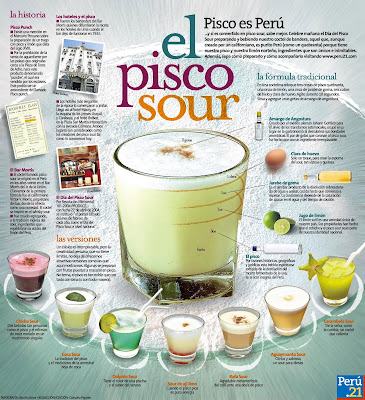Machu Picchu es el símbolo por excelencia de la Civilización Incaica, tanto para nosotros como para el visitante internacional. El Camino Real, que llevó a peregrinos y a oficiales autorizados del imperio a esta Ciudad Sagrada, era el "Camino Inca".
The Lost City of Machu Picchu is without doubt the most recognizable symbol of Inca Civilization for us as well as for the international visitor. "The Inca Trail", as it is known now, was the Royal Highway that led pilgrims and officials of the Empire to the Sacred City of the Incas.
Inicio del Camino Inca / Start the Inca Trail
El Camino Inca es, sin duda, el camino más pintoresco del mundo, debido a que está rodeado de una exquisita belleza natural y vistas inolvidables, que incluyen diversas áreas ecológicas, desde las pocos fértiles tierras de la altura hasta el Bosque de Nubes de los Andes, con vegetación exótica, entre las que se han identificado más de 250 especies de orquídeas, así como numerosas aves, animales y reptiles, incluyendo varias especies consideradas en peligro de extinción.
Caminando a lo largo de este antiguo Camino Inca, usted tendrá la oportunidad de visitar las edificaciones nunca encontradas por los españoles, varias de las cuales están aún cubiertas por vegetación, lo que le dará la impresión que usted las está descubriendo.
Hiking the Inca Trail is a highly rewarding holiday choice! It is the best of its kind in the world, due to its exquisite natural beauty and unforgettable views offering a wide variety of ecological areas, from deserts to tropical Andean cloud forest; home to exotic plants and animal life. On the Inca Trail, there are over 250 known species of orchids , and in the different ecosystems, numerous rare birds, animals, and reptiles including several species considered to be in danger of extinction.
Walking the ancient Inca Trail gives you the opportunity to visit overgrown Inca buildings undiscovered by the Spanish Empire, giving you the feeling that you are the first to come across them.
Phuyupatamarka
El viaje a través de esta “carretera andina” es realmente una experiencia fascinante e inolvidable. El Camino Inca, con varios tramos de escaleras, está construido con grandes adoquines, tiene túneles cavados en la piedra y puentes de madera para cruzar los pequeños ríos que corren por valles, bosques de nubes y montañas.
Walking this Andean highway is a truly fascinating and unforgettable experience. The Trail is paved with blocks of stone, It has stone stairways, tunnels and wooden bridges. It crosses rivers, streams, temperate valleys, warm cloud forests and cold highlands.
Warmiwañusca
La grandeza del paisaje aunado a la ingeniería de estas obras, sea el mismo Camino Inca o los restos arqueológicos que se van develando al recorrer la distancia que separa Cusco de Machu Picchu, conduce al viajero a meditar sobre el desarrollo intelectual y espiritual de la civilización inca, que logró alcanzar la mejor armonía entre el conocimiento científico y la naturaleza.
Witnessing and experiencing all this wonder make the traveler to marvel at the intellectual and spiritual grandeur of Andean man, whose highest achievement was Inca civilization.
Patallaqta
El Camino Inca a Machu Picchu es parte de un extenso sistema incaico de caminos, de más de 23.000 kilómetros, que integraron el imperio del Tawantinsuyo (cuatro regiones), que cubría Colombia meridional, occidente de Brasil, Ecuador, Perú y Bolivia, llegando al centro de Chile y norte de Argentina. Estos caminos se tendieron principalmente por la costa y la montaña, pero en algunos casos alcanzan las montañas tropicales cercanas a la selva, que es el caso del Camino Inca a Machu Picchu, que nace en la capital del Imperio Incaico.
The Inca Trail is part of a 30,000 kilometer highway system, that integrated the vast Inca Empire of Tawantinsuyo (The Four Ways), running from southern Colombia to central Chile passing through the cities of Quito in Ecuador; Cajamarca, Huanuco, Jauja, Huamanga and Cusco in Peru; La Paz and Cochabamba in Bolivia; and finishing in Salta and Tucuman in Argentina. These highways run mainly by the coast, through the Highlands and in some cases reached the tropical mountains near the Amazon forest. The Inca Trail to Machu Picchu is a fine example of this last type of highway.
Imperio del Tahuantinsuyo / Tahuantinsuyo Empire
En estos días, la aventura más importante del mundo incaico es seguir los pasos de los Incas en sus viajes más interesantes y razonablemente accesibles de la región, el Camino Inca a Machu Picchu, "La Ciudad Perdida de los Incas" o Choquequirao, uno de los últimos bastiones de los incas rebeldes a la presencia española, circuito que podrá encontrar en este mismo site.
Following the footsteps of the original Incas, on one of the most accessible treks in the region, the Inca Trail to the enigmatic Machu Picchu, The Lost City of the Incas, is one of the greatest adventures you are ever likely to have nowadays. Years of experience with adventurers on this trail have helped us to design three unforgettable Inca Trailtreks that we are now proud to offer you.









